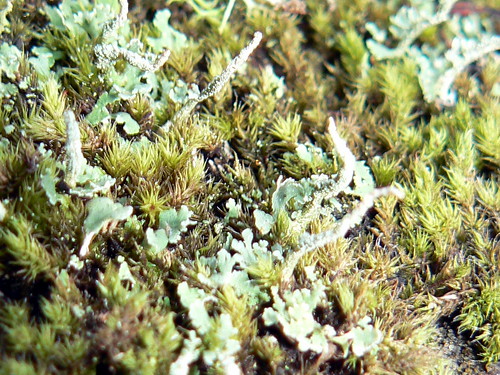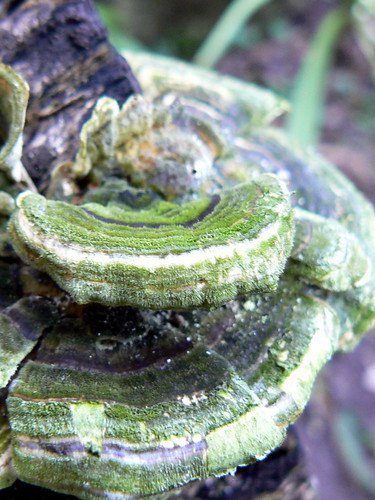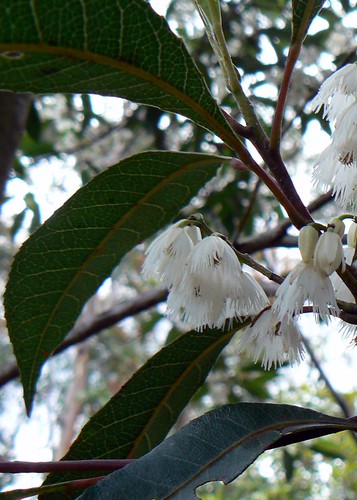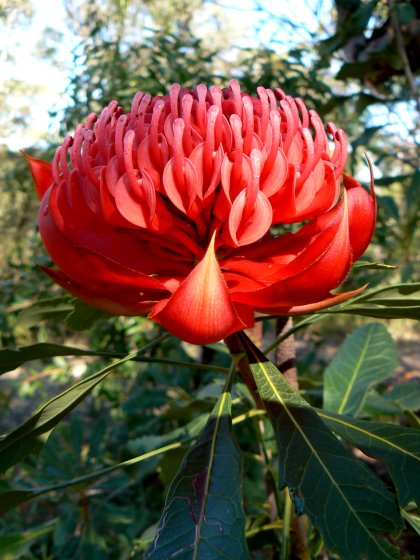Now the wood is decaying and the fungi are clearly pleased with what they can digest from it. I just took these images of the residents.
This is a jelly fungus, Tremella spp. It feels just as you'd expect: soft and gelatinous. Tremella are parasitic on other fungi and in this case, it's possible it's feeding on the hyphae of the next fungus:
A bracket (or shelf) fungus. I'm unsure of the species, but suspect that the green colouring might be a lichen growing on the fungus itself. Lichen is the result of a mutualistic relationship between an algae and a fungus, so if this is lichen, it's an example of two symbioses: one parasitic, one mutualistic. If anyone reading can identify the fungi and confirm if it's wearing a very fetching lichen jacket, please, let me know!
Busy place, the stump.
And on the sandstone rock next to it, another thriving ecosystem is growing:

Here are moss and what I'm pretty sure are hornworts, which comprise the pale green flattened lobes and horn-like capsules in which the spores are produced.





